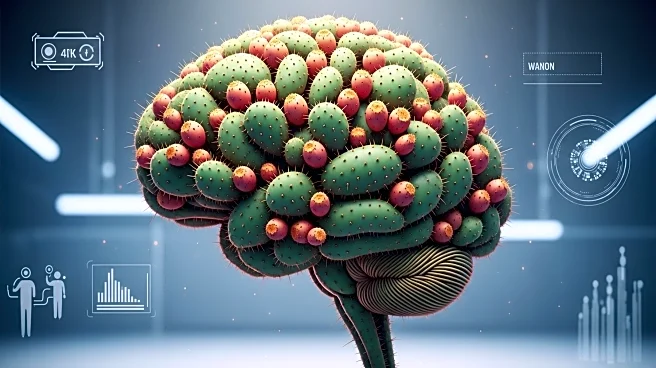What is the story about?
What's Happening?
A recent study conducted by neuroscientists Elizabeth Rizor and Viktoriya Babenko from the University of California, Santa Barbara, has uncovered significant changes in the brain structure of women throughout their menstrual cycles. Published in the journal Human Brain Mapping, the research involved 30 women and utilized advanced MRI scans to observe the brain's white and gray matter as hormones fluctuated. The study found that as hormones like estrogen and progesterone rise and fall, the brain's white matter, which connects different regions, and gray matter, responsible for processing and thinking, undergo subtle shifts. These changes occur not only in hormone-sensitive areas like the hypothalamus but across the entire brain. The findings suggest that estrogen enhances communication between brain regions, potentially explaining why some women feel more creative or socially confident mid-cycle. Conversely, progesterone appears to promote a 'rest and rebuild' phase, increasing brain tissue volume and reducing cerebrospinal fluid, which may lead to feelings of calmness and introspection.
Why It's Important?
This study challenges the traditional focus on male brain studies by highlighting the dynamic nature of the female brain in response to hormonal cycles. Understanding these changes is crucial as it could provide insights into why certain neurological or emotional conditions, such as migraines or mood fluctuations, vary with the menstrual cycle. The research emphasizes the importance of considering hormonal rhythms in developing personalized treatments for women, rather than viewing them as mere variables. By acknowledging the brain's adaptability and resilience, this study contributes to a more comprehensive understanding of female biology, potentially leading to more empathetic and effective healthcare approaches.
What's Next?
The findings from this study could pave the way for further research into the implications of hormonal cycles on women's neurological and emotional health. Scientists may explore personalized medical treatments that align with hormonal rhythms, potentially improving outcomes for conditions like anxiety and migraines. Additionally, this research could influence future studies to include more female participants, ensuring that the unique aspects of female biology are adequately represented and understood in scientific research.
Beyond the Headlines
The study underscores the need to shift the narrative around women's health, recognizing the menstrual cycle as a complex interplay of biological processes rather than a source of inconvenience. By understanding the brain's adaptability, society can foster greater empathy and support for women experiencing hormonal changes. This research also highlights the potential for broader applications in understanding how hormonal fluctuations impact cognitive and emotional functions, which could lead to advancements in mental health treatments and workplace accommodations.
AI Generated Content
Do you find this article useful?













